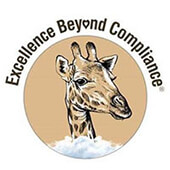Academy Contributors
Getting Better All the Time: Lift Yourself Up
 By James F. Gesualdi By James F. Gesualdi
"Every adversity, every failure, every heartache carries with it the seed of an equal or greater benefit." —Napoleon Hill
Disappointments and setbacks can stop us along a journey—sometimes ending it, possibly prematurely—point us in a new direction, or simply make us think, regroup, and carry on with a better approach. In our weaker moments, these seeming obstacles can weigh us down and, even worse, may lead us to blame circumstances, forces, or people outside of our control. While such a reaction is commonplace, skip that "emotional placebo" and get better.
One of a few recent developments for me, professionally and personally, came about as the result of a (fortunately) very short-lived reaction that blocked constructive action. Being humbled, yet not crushed, and realizing the need for a better approach, I stumbled through, thinking, "I am simply not good enough." The thought, grounded in reality, was unsettling. It was also unproductive. Previous columns and Excellence Beyond ComplianceŽ have posited: "I want to get better. I am committed to continuous improvement in all ways."
There is always something I can do to be better, to make an even bigger difference, to serve more effectively. Some consistent practices assist in ongoing improvement efforts and compound to good effect, but the greatest growth and advances seem to flow from adversity and the inspiration it can bring.
How fortunate I am to work with committed and compassionate people, dedicated to caring for and protecting the animals in zoological settings and in the wild. To contribute even in a modest way to animal well-being is life energy well spent. Mindful of the great blessing it is to be able to do such good, being in the presence of like-minded souls—or the animals themselves—inspires me to move ever upward. Excelsior, indeed!
Adversity and challenges, viewed constructively, do not need to be burdens added to our already overwhelming responsibilities. Taking ownership of situations, even in the face of being held accountable, empowers us to be better. Whatever the situation, or however daunting the challenge, we can start—here and now—to make the matters before us, and ourselves, better. The bigger the challenge, the greater the opportunity exists for improvement and transformation.
After all, it is about "Getting Better All the Time," particularly with respect to ongoing enhancements in animal welfare and professional development. Study your challenges and those before the zoological community. Lift yourself and others, including animals, and keep going.
© 2016 James F. Gesualdi, P.C. The opinions expressed herein are solely those of the author. This is not, nor should it be construed as, legal advice.
Please email me at jfg@excellencebeyondcompliance.com to share the good you are doing (as only you can), or with any comments or questions on this column or suggestions for future ones.
For upcoming workshops and sessions, contact info@excellencebeyondcompliance.com.
 Something Fishy Is Going On Something Fishy Is Going On
By Dr. Rob Jones, "The Aquarium Vet"
This month, we will look at chlorine and chloramines, which are frequently added to water as disinfectants, but which can negatively impact many aquatic animals. Chlorine is also frequently used for sterilizing purposes, so it is important to understand the chemistry involved.
Chlorine
Chlorine is most commonly added to water systems as chlorine (Cl2) gas, which then reacts with water in the following way: Cl2 H2O ➡ HOCl + H+ + Cl-
The hypochlorous acid (HOCl) then dissociates as follows: HOCl ➡ OCl + H+
Gas chlorination of drinking water thus lowers the pH and acidifies the water, due to the production of hydrogen ions (H+).
The hypochlorite ion (OCl) has less germicidal activity than hypochlorous acid. This is because the negative electrical charge makes it more difficult to penetrate the cell membrane. The percentage of these two products depends on the pH of the solution:
- pH of 6 = 95% as hypochlorous acid (HOCl); 5% as hypochlorite ion (OCl)
- pH of 7 = 75% as hypochlorous acid (HOCl); 25% as hypochlorite ion (OCl)
- pH of 8 = 20% as hypochlorous acid (HOCl); 80% as hypochlorite ion (OCl)
Chloramines
Chloramine is an inorganic compound with the formula NH2Cl. It is a colorless liquid at room temperature. Chloramines are more stable as a disinfection agent, and so many water supply authorities add them to municipal supplies. Chloramines have weaker disinfection properties compared to chlorine, but—paradoxically—are generally more toxic to fish. In solutions of water with a pH of 7.0 to 8.5, hypochlorous acid (HOCl) reacts with ammonia to form the inorganic chloramines in a series of reactions shown below:
NH3 + HOCl ➡ NH2Cl + H2O (monochloramine)
NH2Cl + HOCl ➡ NHCl2 + H2O (dichloramine)
NHCl2 + HOCl ➡ NCl3 + H2O (nitrogen trichloride)
These reactions, again, depend on the pH level.
Next month, we will look at problems chlorine and chloramines cause for our aquatic animals.
E-quarist™ Courses—Academy Subscriber Special!
The San Diego Zoo Global Academy is excited to share an additional Academy subscriber benefit regarding our collaboration with Dr. Jones: as an Academy subscriber, you are now entitled to a discount on the e-quarist™ courses.
For more information about the SDZGA discount, or to view our Trial Version, please contact katrina@theaquariumvet.com.au.
Visit the Aquarium Vet website at theaquariumvet.com.au |